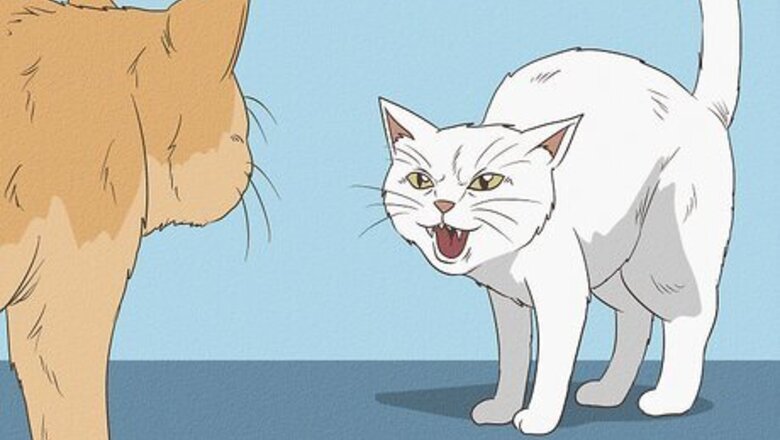
views
Creating a Cat Friendly Household
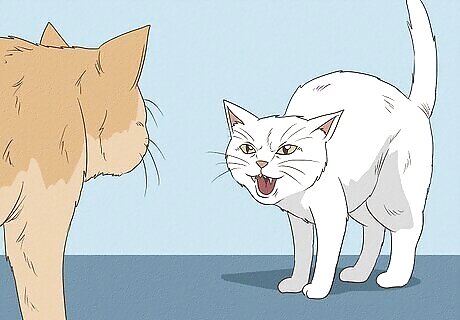
Be aware that cats can get stressed out very easily. Cats are creatures of habit and anything that interferes with their daily routine, or makes them feel vulnerable, is classed as stress. These stressors can be simple things like if you spend the day away from your house, the arrival of a new baby, or a neighborhood cat lurking around your cat’s territory.
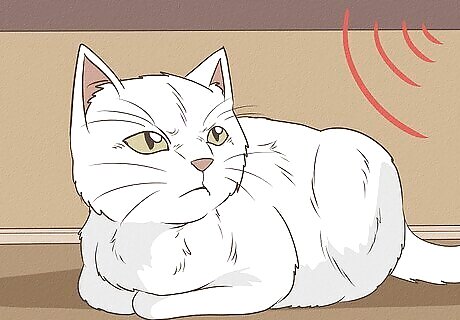
Understand that cats respond to what is happening around them. Cats are also very sensitive to atmosphere so if there is disquiet, shouting, or arguments happening around your cat, she may become very stressed out and begin to overgroom.

Consider any changes that have been made to your cat’s routine. Minimize your cat’s stress whenever possible. If you are not sure what is causing your cat stress, consider anything that has changed recently. Have you gotten a new kitten? Did you and your partner just have a baby?
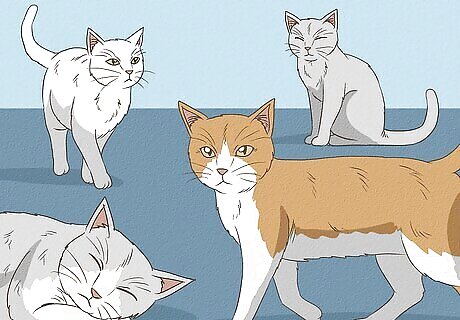
Keep less than five cats in your house. To a certain extent this step depends on the size of the house. For example, a one-bedroomed flat should not have more than two cats in it, but a mansion could certainly house five cats. Statistically a house with five or more cats in it will have at least one cat that exhibits signs of stress, such as inappropriate urination or excessive grooming. When you have multiple cats living in the same house, stress can be created over a pressure for resources like food and water, even if there is plenty of those resources to go around. Cats naturally get territorial, and their individual feline personalities can clash if they have to deal with too many other cats.
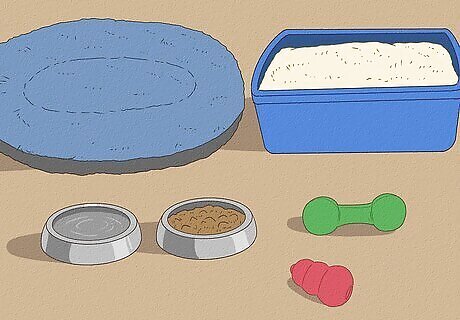
Provide your cat(s) with plenty of resources. To a cat, resources are those things which she needs for a comfortable life. These resources include access to food, water, toilet facilities, and a safe place to sleep. As a general rule, provide one of each for every cat in your house, plus one extra. Giving each cat their own resources will help to relieve tension created when cats have to share a space with one another.
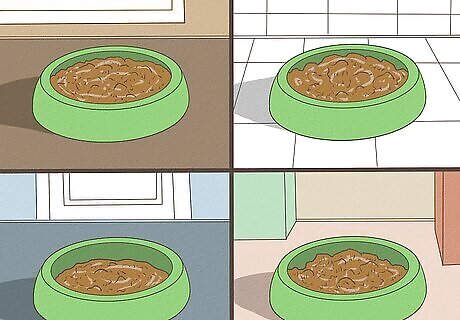
Choose appropriate locations for your cat’s food and water. Think about where you put your cat’s resources. For instance, in a multi-cat household, place the food bowls in different rooms. This way the top-cat will not hog all of the food bowls, which makes it easier for all of the other cats to eat without pressure or stress. It's best to keep food and water bowls separated, as most cats like them to be kept at a distance from each other.
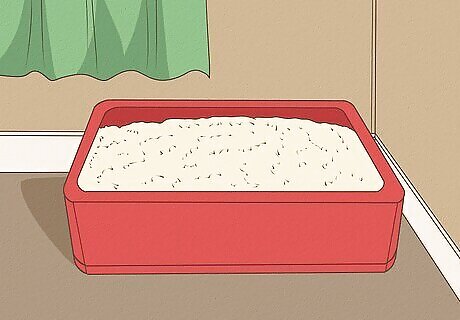
Keep your cat’s litter box away from things that could cause her stress. If you place your cat’s litter tray next to something like a washing machine or dryer, your cat may become stressed out whenever she needs to use the litter box while the machine is on. Your cat will then begin to associate going to the bathroom with fear, which puts her into a state of conflict each time she needs to urinate or defecate. To combat this fear, place litter trays in quiet corners where your cat is not likely to be disturbed.
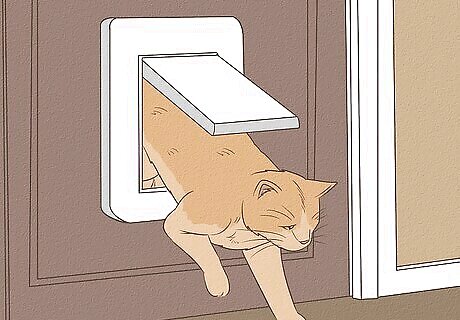
Give your cat her own space. As mentioned above, cats can feel stressed if they feel like another cat is invading their territory. When another cat, particularly an unfamiliar one, wanders into your cat’s space, your cat may begin to feel insecure and stressed. To prevent territory invasion use a programmable cat flap that is triggered by your cat's microchip to stop strays from gaining access to your cat's territory.
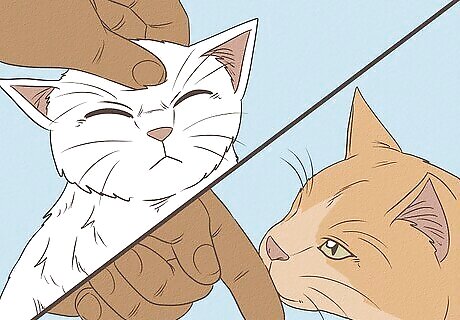
Use scent as a way to prepare your cat for the arrival of a new cat. Another invasion of territory is the arrival of a new cat or kitten into your home. To avoid this stress, introduce the new cat gradually using scent as a first introduction. Keep the kitten in a separate room where he cannot accidentally bump into the established cat, and give him his own food, water, toys, and tray. Stroke the kitten, then transfer his smell to the established cat by stroking her. By doing this, your cat will gradually get used to the idea of a new cat being around. The first time the cat meets the kitten, have the kitten in a cat box so that the cat can choose to investigate without getting chased or pounced on by the kitten. Again, this is all about getting the cat used to the idea and learning that the kitten is no threat to her resources.
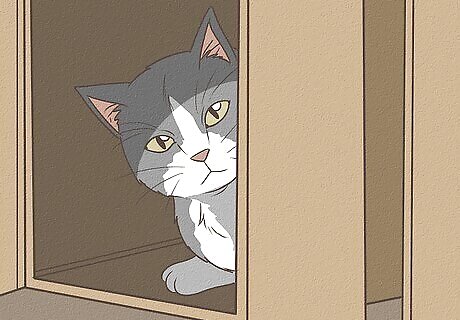
Give your cat places to hide. Even a solo cat who has plenty of resources may begin to feel stressed if she feels like she has nowhere to hide. Cats that are constantly "on display", meaning they have nowhere to escape to for solitude, are generally stressed. Provide your cat with cardboard boxes, a gap behind the sofa, or a climbing tree with hidey holes to make your cat feel like she has somewhere to slink off to.
Using Non-prescription Products and Medications

Use Feliway to calm your cat. A mother cat gives off pheromones (or chemical messengers) that make her kittens feel safe. Feliway is a synthetic version of the feline pheromone that makes kittens feel safe and secure.T It is available as a room diffuser, or as a spray for pet bedding. This scent will slowly reassure your cat, and make her feel like your home is a safe place. This is especially helpful if you have moved to a new home and your cat is having a hard time adjusting. Feliway is not a quick fix; in fact, it may take two weeks to see any sign that your cat is feeling less stressed.

Give your cat Zylkene. Zylkene is a nutraceutical that acts on the same region of the brain as diazepam. A nutraceutical is a food supplement that has a pharmaceutical-like activity, but is not a drug. Scientists have identified a milk protein that stimulates the same part of the brain that diazepam acts on in order to calm a cat; Zylkene is made up of this milk protein. With Zylkene, you may see a change in your cat within seven days. Generally, Zylkene will be given to the cat over the course of four to six weeks to ensure that the over-grooming habit is broken.

Try herbal remedies. Skullcap and Valerian is an herbal remedy that is anecdotally reported to reduce stress and anxiety in cats and dogs. The mode of action is unproven and unknown however, so talk to your vet before giving your cat this herbal remedy.

Take your cat to get prescription medication if the above methods do not work. If the above measures have been tried and the cat remains stressed and continues to over-groom, then prescription medications may be necessary. Of these, clomipramine is the only licensed product available for use in cats (it is described in the following step).
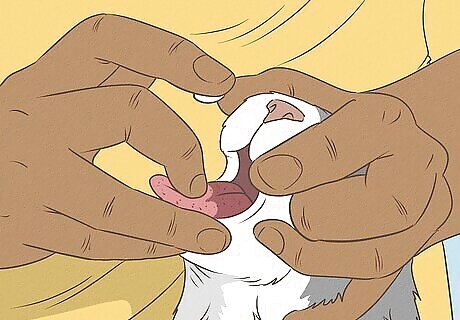
Get a prescription for Clomipramine (Clomicalm). Clomipramine is a drug used for the treatment of cat’s with obsessive-compulsive behaviors, such as over-grooming. It belongs to a family of drugs called tricyclic antidepressants and the exact mode of action is not completely understood. It is believed that it primarily acts by preventing the reuptake of neurotransmitters such as norepinephrine and serotonin. The dose of clomipramine is 0.5 mg/kg once daily by mouth. It is available in veterinary formulation as clomicalm and comes in 5 mg tablets. A 5 kg cat requires half a tablet once a day.













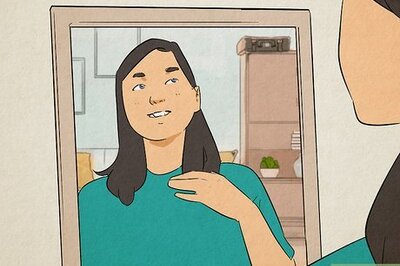
Comments
0 comment